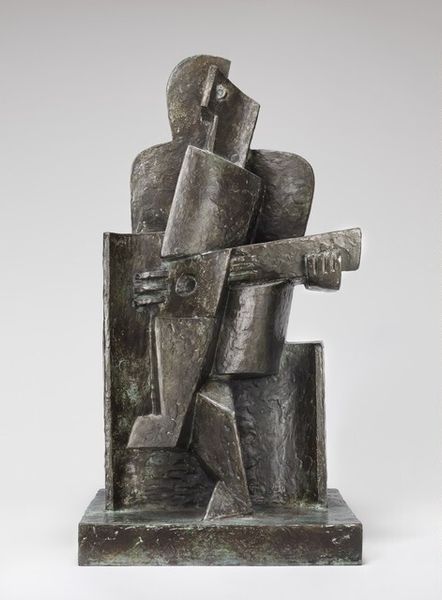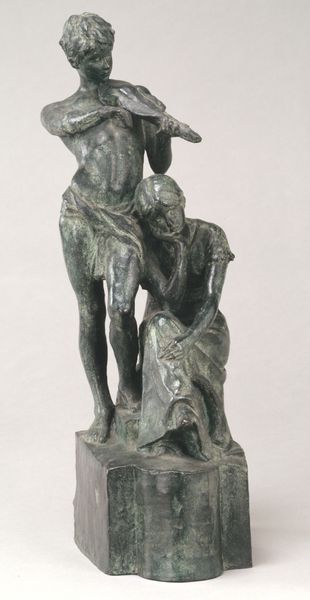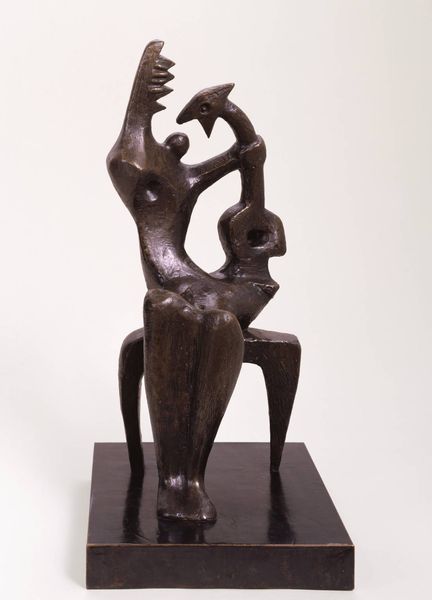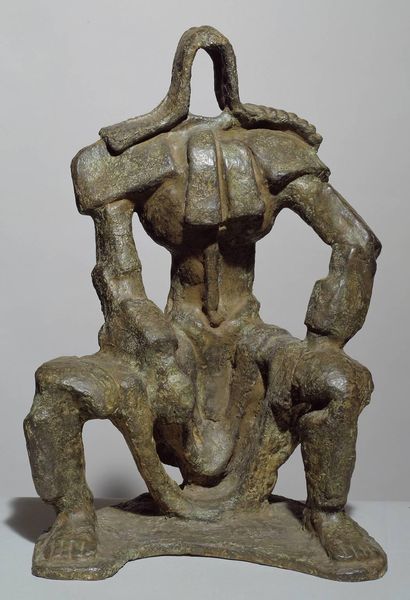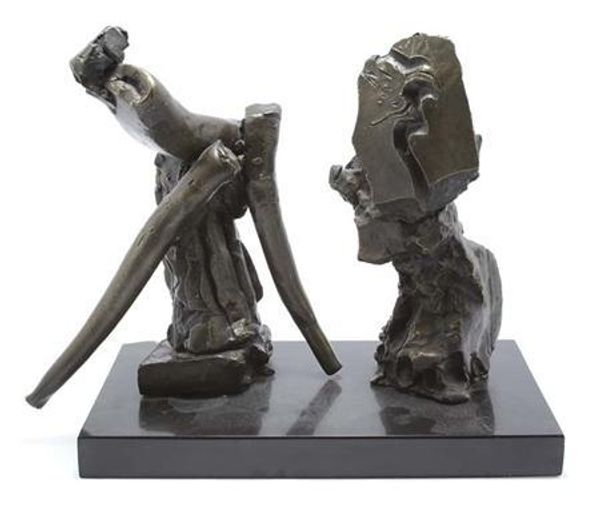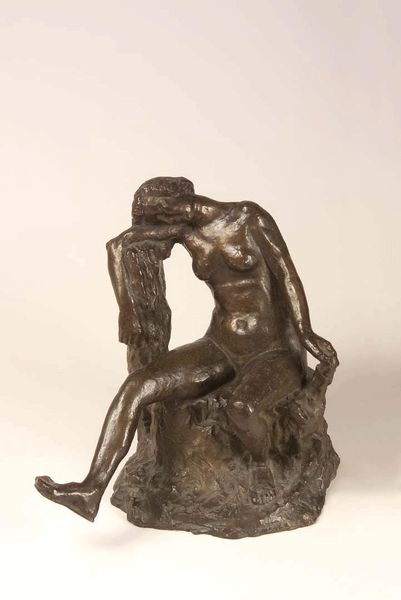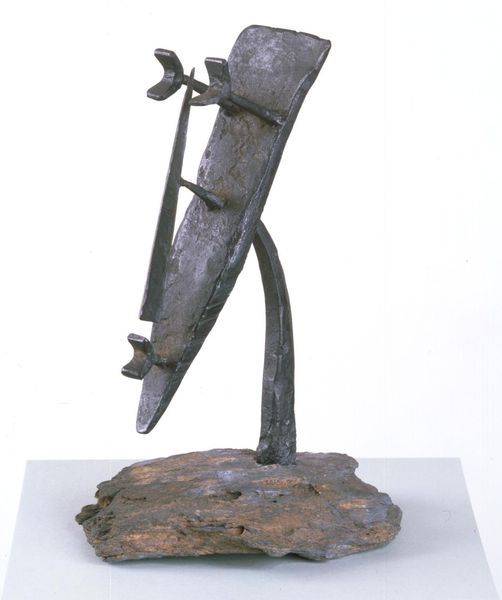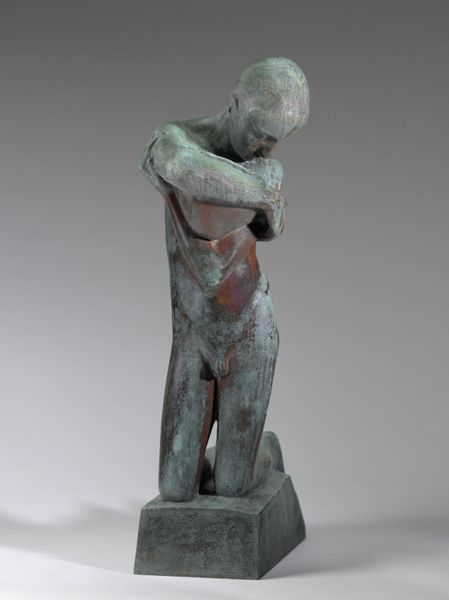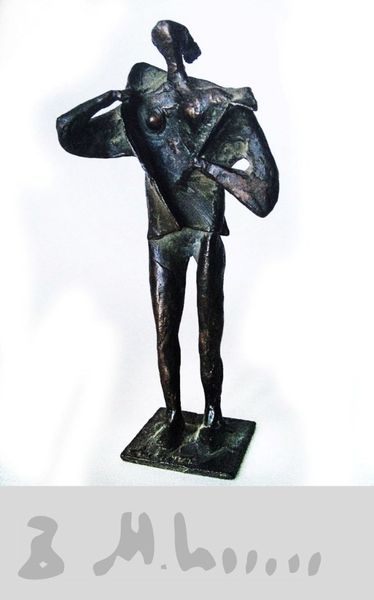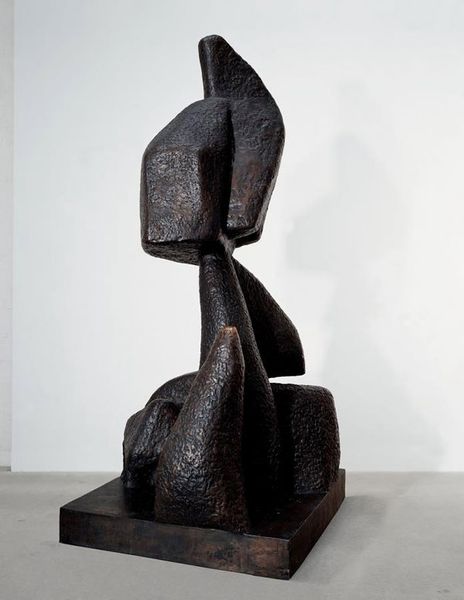
bronze, sculpture
#
abstract-expressionism
#
cubism
#
sculpture
#
bronze
#
figuration
#
sculpture
#
modernism
Copyright: Zadkine Research Center (displayed with the permission of Zadkine Research Center)
Curator: Here we have Ossip Zadkine’s sculpture, “The Return of the Prodigal Son,” created in 1964. It’s cast in bronze, a medium that beautifully captures the angular, fragmented forms of the figures. Editor: My first impression is one of both grief and joy, strikingly coexisting. There’s such raw emotion etched into these fragmented forms. It’s a scene of profound reunion. Curator: Indeed. The narrative pulls from the biblical story of the prodigal son. Zadkine doesn't give us a literal translation but rather an emotional rendering. Observe how the central figure is almost skeletal, bearing a cavernous opening where we might expect a heart. Editor: This piercing absence is haunting, suggesting not only repentance, but also the deep, lasting wound inflicted on the family dynamic. The figures on either side seem to offer solace, protection even. They feel protective but also detached with their masked-like faces. Who are those people surrounding the one in pain? Curator: The figures embody the themes of forgiveness and redemption. They’re essential players within the spiritual drama. It might be useful to consider Zadkine’s personal experiences with exile during the world wars. He imbues universal human conditions with specific historical meaning. Editor: Absolutely. His flight from Nazi-occupied France definitely informs the narrative here. This sculpture is a testament to the endurance of the human spirit after trauma and war. Zadkine cleverly recontextualizes a religious parable to reflect collective displacement. Curator: You have nailed the historical significance. But also focus on Zadkine’s stylistic choices. The angularity echoes Cubism, but there's also an emotionality reminiscent of Abstract Expressionism. Do you notice how the raised arms form this gesture, as if beckoning from beyond? It's heavy with symbolic meaning. Editor: I’m captivated by the ambiguity that the sculptural forms evoke. The rough textures communicate the characters' complex emotions so brilliantly. It’s as though this scene represents many layers, inviting repeated looks and contemplation. Curator: It serves as a potent reminder of our potential for mistakes, growth, and healing. What feels most resonant about the prodigal son returning? Editor: How cycles of shame and remorse and the path toward familial recovery and grace speak to broader societal fractures. Art at its finest is the unmasking.
Comments
No comments
Be the first to comment and join the conversation on the ultimate creative platform.
